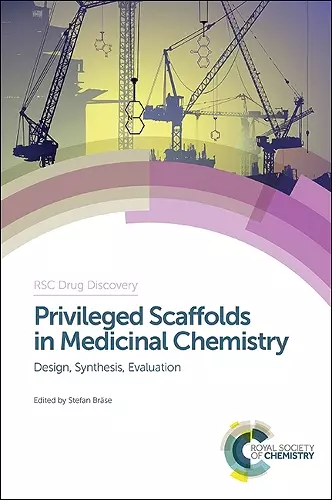Privileged Scaffolds in Medicinal Chemistry
Design, Synthesis, Evaluation
Format:Hardback
Publisher:Royal Society of Chemistry
Published:20th Nov '15
Currently unavailable, and unfortunately no date known when it will be back

One strategy to expedite the discovery of new drugs, a process that is somewhat slow and serendipitous, is the identification and use of privileged scaffolds. This book covers the history of the discovery and use of privileged scaffolds and addresses the various classes of these important molecular fragments.
The first of the benzodiazepines, a class of drugs that is powerful for treating anxiety, may not have been discovered had it not been for a chance experiment on the contents of a discarded flask found during a lab clean-up. Some years later, scientists discovered that benzodiazepine derivatives were also effective in treating other diseases. This class of molecules was the first to be described as privileged in the sense that it is especially effective at altering the course of disease. Other privileged molecular structures have since been discovered, and since these compounds are so effective at interacting with numerous classes of proteins, they may be an effective starting point to look for new drugs against the supposedly “undruggable” proteins.
Following introductory chapters presenting an overview, a historical perspective and the theoretical background and findings, main chapters describe the structure of privileged structures in turn and discuss major drug classes associated with them and their syntheses. This book provides comprehensive coverage of the subject through chapters contributed by expert authors from both academia and industry and will be an excellent reference source for medicinal chemists of a range of disciplines and experiences.
Many of the chapters have a very readable format; the (mainly) heterocycle core structure is presented, physicochemical properties are given, then synthetic routes to such molecules are shown followed by case studies on many actual drugs based on these scaffolds. Such presentation renders this book appealing to heterocycle, natural product, and medicinal chemists and would be extremely useful pedagogically e.g., for teaching to masters and advanced undergraduate-level students or presenting as case studies in group meetings with postgraduate students. This is certainly a book that would be of interest to researchers and as a reference text in university and industry libraries.
* ChemMedChISBN: 9781782620303
Dimensions: unknown
Weight: 880g
486 pages